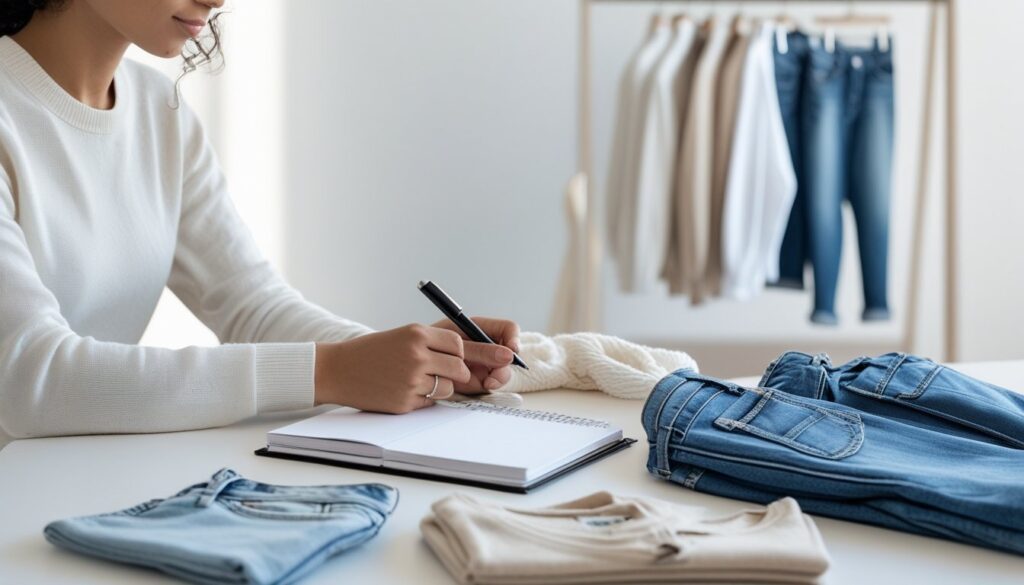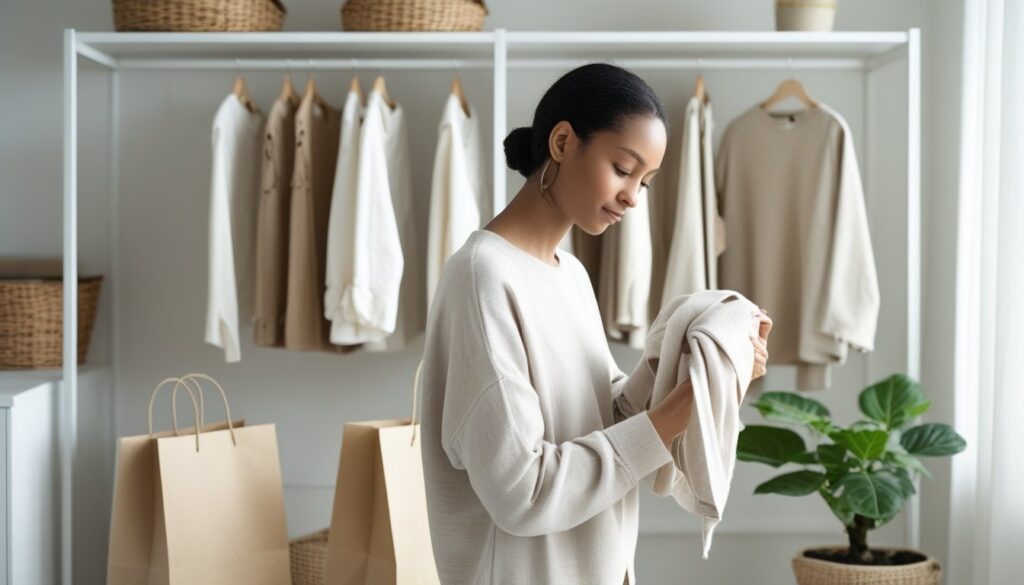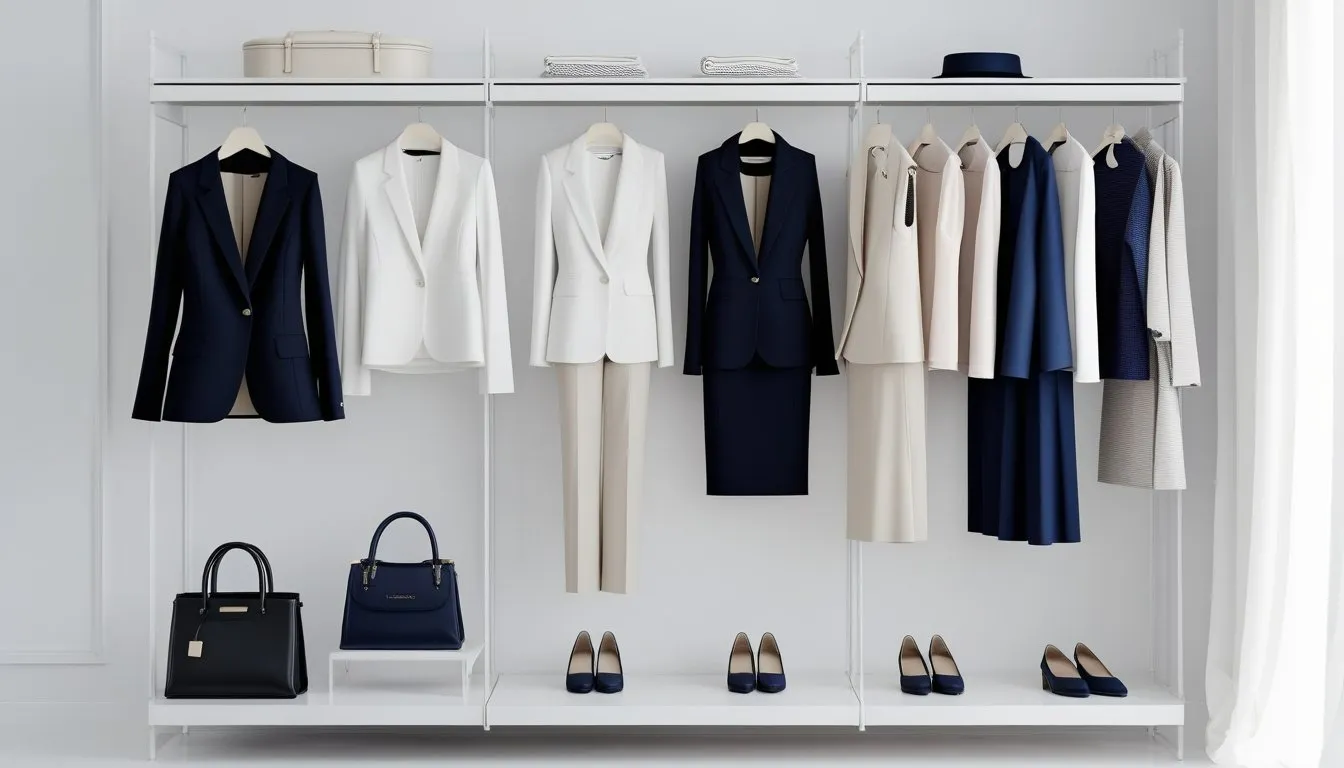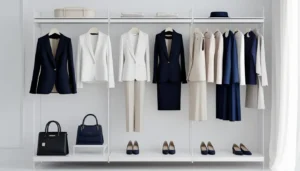What does intentional shopping really mean?
Intentional shopping simply means buying with purpose. Instead of walking into a store (or scrolling online) and grabbing things on impulse, it’s about slowing down and asking yourself:
- Should I really buy this?
- Will it truly add value to my life?
Most of us shop without thinking too much. Maybe it’s boredom, stress, or a big red “SALE” sign pulling us in. The problem is, these quick buys often end up sitting in the back of a closet, gathering dust, or worse—making us feel guilty about money wasted. That’s the exact opposite of intentional shopping.
Minimalists look at shopping differently. For them, every purchase has to serve a purpose. It doesn’t mean never buying new things. It means buying fewer things, but choosing them wisely. An intentional shopper values quality over quantity. They’d rather buy one well-made jacket that lasts for years than five cheap ones that fall apart after a season.
At its core, intentional shopping is about aligning what you buy with your real needs, your values, and your lifestyle. If you care about saving money, reducing clutter, or living sustainably, shopping intentionally helps you stay true to those goals.
Think of it like this: every time you buy something, you’re inviting it into your life. So the question is—does it deserve that space? When you shift to this mindset, shopping feels less stressful. You no longer chase trends or buy because of pressure. Instead, you feel in control, and every purchase brings real satisfaction.
Once you experience that sense of calm and clarity, it’s hard to go back to mindless buying. That’s the beauty of intentional shopping—it’s not just about what you buy, but how you live.

Why do minimalists focus on shopping with purpose?
Minimalists believe that the way we shop says a lot about the way we live. When you shop with purpose, you’re not just filling up a bag—you’re choosing how you want your life to look and feel. That’s why minimalists don’t shop to pass time or just because something is “trending.” They focus on buying what actually matters.
1. From Clutter to Clarity:
Shopping with purpose helps cut down the stress that comes with clutter. Think about it—every item you bring home isn’t just an object, it’s something you’ll have to store, clean, and eventually get rid of. By buying less, minimalists free themselves from this cycle. Instead of drowning in stuff, they create space for things that really bring joy, like experiences, relationships, or personal growth.
2. Financially Beneficial:
There’s also a big financial benefit. Purposeful shopping means spending only on things that add value, which naturally leads to saving more money. Over time, this builds a sense of freedom—you’re not stuck paying for items you didn’t even need in the first place.
A few years ago, I used to buy a new pair of shoes almost every month. They looked great for a while, but most ended up kept in a corner, barely worn. One day, I asked myself, “Am I buying shoes, or am I buying the feeling of excitement they give me for a short time?” That question changed the way I shopped. I stopped buying multiple pairs and invested in one high-quality pair that I still wear today. Not only did I save money, but I also felt lighter, knowing I wasn’t wasting space and energy on things I didn’t need.
That’s exactly why minimalists focus on shopping with purpose—it’s not about less for the sake of less, but about making room for what truly matters.

Be honest about what you actually need, want, and need
One of the hardest parts of intentional shopping is learning to separate “wants” from “needs.” On the surface, it sounds simple: needs are essentials, and wants are extras. But in real life, the line often gets blurry. For example, do you need that new phone upgrade, or do you just want it because it’s the latest model?
Minimalists use a simple pause-and-think approach. Before buying, ask yourself:
- Will this make my life easier or solve a real problem?
- Do I already have something that does the same job?
- If I didn’t buy this today, would I truly miss it?
- How frequently will I actually wear this?
- How long is it likely to last?
- Can it be repaired or maintained if it gets damaged?
Needs are things that support your daily life—food, shelter, clothes, transportation. Wants are often emotional triggers—things we buy for excitement, comfort, or social approval. Neither is “bad,” but the balance matters. When you keep needs first and wants second, your shopping feels more meaningful and less wasteful.
A while ago, I was shopping for a simple white shirt to replace an old one. While browsing, I spotted a stylish jacket on display. It wasn’t on my list, but it instantly caught my attention. I imagined how good it would look, and for a moment, I convinced myself I “needed” it. Then I paused and asked: “Do I already have something similar? Will I wear it often, or will it just sit in my closet?” The honest answer was that I already owned two jackets, and buying another would be more about excitement than necessity. So, I stuck with the white shirt—the actual need—and skipped the jacket. Later, I felt lighter and happier, knowing I had made the right choice.
That’s the beauty of understanding wants vs. needs: it saves you from clutter and helps you shop with clarity.

What are the best steps to shop intentionally as a minimalist?
Shopping intentionally doesn’t mean you stop buying things—it means you buy smarter. Minimalists follow a few simple steps that help them avoid clutter, save money, and make purchases they’ll actually use. You can do the same by practicing these habits:
1. Make a shopping list before you buy
A list keeps you focused. If it’s not on the list, don’t put it in the cart. This cuts down on impulse buys.
2. Choose quality over quantity
It’s better to buy one durable item than several cheap ones that fall apart quickly. High-quality pieces often save money in the long run.
3. Stick to timeless pieces, not trendy ones
Trends fade fast, but classic items—like a simple black blazer or neutral sneakers—stay useful for years.
4. Ask yourself “why” before buying
Is this purchase solving a problem, or is it just an emotional reaction (stress, boredom, excitement)?
5. Practice the 24-hour rule
If you see something you like, wait a day before buying. If you still want it after 24 hours, it might be worth it.
6. Don’t shop until you master intentional shopping
You should not buy anything if you don’t master good intentional shopping. Otherwise there will be a pile of unnecessary clothes and accessories, etc.
Last year, I went shopping for a new winter coat. At the store, I was tempted by a flashy, trendy jacket that looked great on display. It wasn’t on my list, but I almost grabbed it out of excitement. Then I paused and used the 24-hour rule. I left the store and thought about it. The next day, the excitement was gone, and I realized what I actually needed was a classic, warm coat that would last for years. I went back, skipped the trendy option, and bought a high-quality coat that still serves me perfectly today.
Shopping with these small steps makes every purchase intentional—and every item in your home meaningful.

How does intentional shopping save money and time?
When you practice intentional shopping, you’re not just decluttering your home—you’re also protecting two of your most valuable resources: money and time. Most people don’t realize how much they lose by buying on impulse. Every unnecessary purchase costs more than just the price tag. It also takes up space, attention, and future energy.
Here’s how shopping with purpose helps you save:
- Fewer impulse buys = more money in your pocket
When you stick to your list and avoid emotional purchases, you stop wasting money on things you’ll never fully use. - Quality over quantity saves in the long run
Investing in one durable item is often cheaper than buying multiple low-quality versions that wear out quickly. - Less clutter means less wasted time
Think of the hours spent organizing, cleaning, or searching through piles of stuff you don’t use. By owning fewer things, you free up time for what actually matters. - No time wasted on returns or regrets
Buying intentionally means fewer mistakes. You won’t have to stand in long return lines or deal with the guilt of wasted purchases.
That’s the power of intentional shopping: less money wasted, less stress, and more time to enjoy life.

Can intentional shopping also be eco-friendly?
Yes—intentional shopping isn’t just good for your wallet and peace of mind, it’s also better for the environment. Every product we buy has a hidden cost: the materials used, the energy spent in production, and the waste created when it’s thrown away. By shopping with purpose, we naturally reduce our impact on the planet.
Here’s how intentional shopping supports eco-friendly living:
- Less consumption = less waste
Every unnecessary item eventually ends up as trash. Buying fewer things reduces what ends up in landfills. - Choosing quality means longer life cycles
Well-made products last longer, which means less frequent replacements and less manufacturing demand. - Buying timeless instead of trendy cuts down fast fashion
Trendy clothes are often worn a few times before being tossed. Intentional shoppers choose classic pieces that last for years. - Supporting sustainable brands encourages change
When you intentionally buy from eco-conscious companies, you support ethical practices and encourage more businesses to do the same.
Clothes are something we buy often, but without a plan, closets can quickly overflow with items we rarely wear. Minimalist shopping helps you create a wardrobe that feels simple, stylish, and stress-free.

Building a Minimalist Wardrobe with Intentional Shopping
Here’s how to apply intentional shopping to clothing:
- Start with a Capsule Wardrobe
Focus on a small collection of versatile pieces—like neutral shirts, classic jeans, and a few quality jackets—that can be mixed and matched for different looks. - Choose Quality Over Quantity
A well-made pair of jeans that lasts years is better than three cheap pairs that lose shape after a few washes. - Stick to a Color Palette
Pick a few base colors (like black, white, navy, or beige) so your clothes naturally go together. This reduces the urge to buy random pieces that don’t match. - Avoid Trend-Driven Shopping
Trendy clothes often look exciting for a season but quickly lose their appeal. Minimalists choose timeless pieces that never go out of style. - Shop with a List
Know what your wardrobe is missing. If you already have five pairs of sneakers, do you really need another one?

What steps can I take to avoid unnecessary shopping?
One of the biggest challenges in today’s world is avoiding unnecessary shopping. Stores and online ads are designed to make us buy more, even when we don’t really need anything. The good news? With a few mindful habits, you can stop wasting money and keep your home clutter-free.
Here are some practical steps you can follow:
- Unsubscribe from marketing emails
Those “limited-time offers” in your inbox are designed to tempt you. Removing them helps reduce impulse buys. - Avoid “just browsing” online shops
Scrolling through shopping apps out of boredom often leads to unnecessary purchases. Instead, do something else that relaxes you—like reading, walking, or calling a friend. - Don’t shop when you’re stressed or bored
Shopping can feel like therapy, but it usually ends with regret. Find healthier ways to cope with emotions, like journaling or exercising. - Set a monthly budget
When you know your spending limit, you’re more likely to think twice before adding extra items to your cart. - Use the “one in, one out” rule
If you buy a new item, you first have to donate or declutter one of the old one. This keeps your space balanced and prevents clutter. - Trying to avoid mouth-watering offers
You should avoid different thresholds from bigger brands like sale offers and free shipping.
I remember once going to the mall just to “look around.” I didn’t need anything, but I walked out with three shirts from a buy-one-get-one deal. A few months later, two of them were still untouched in my closet. That was my wake-up call. Since then, I’ve made it a rule not to shop unless I have a clear list. Now, I only buy what I need, and I feel more in control of my money and my space.
Avoiding unnecessary shopping isn’t about denying yourself—it’s about creating freedom. You’ll notice less clutter, more savings, and a sense of calm every time you walk into your home.

How can intentional shopping change my lifestyle in the long run?
Intentional shopping isn’t just about saving money or keeping your closet neat—it’s about creating a lifestyle that feels lighter, calmer, and more meaningful. When you learn to shop with purpose, every purchase begins to serve you instead of controlling you.
Here are some of the long-term changes intentional shopping can bring:
- Less Clutter, More Clarity
A wardrobe full of clothes you actually wear saves time, reduces stress, and makes your daily routine easier. No more “I have nothing to wear” moments in front of an overflowing closet. - Stronger Finances
When you stop buying impulsively, your spending naturally decreases. Over time, you will have financial freedom to spend wisely on other beneficial items, like travel or investments. - Better Self-Confidence
Owning fewer but well-chosen pieces helps you discover your personal style. Every outfit feels intentional, which boosts confidence. - Sustainability
Buying less and choosing better-quality clothing means reducing waste and supporting a more sustainable lifestyle. This small shift makes a big impact over the years.
I used to buy new clothes before every social event, thinking I needed “something fresh” to look good. But months later, many of those pieces sat untouched at the back of my wardrobe. After practicing intentional shopping, I started investing in timeless staples—like a well-fitted blazer and versatile shoes—that I could wear in multiple ways. Not only did my wardrobe shrink in size, but I actually started getting more compliments on my style. Best of all, I felt lighter, less stressed, and more confident in my choices.
Over time, intentional shopping becomes more than just a habit—it’s a mindset shift. It changes the way you see your wardrobe, your money, and even your life.
Minimalist Shopping: Final Thoughts
I hope you found this guide on minimalist shopping helpful and inspiring. Remember, minimalism isn’t about cutting yourself off from the world or never buying anything again. It’s about slowing down, being mindful, and making purchases that actually add value to your life. Studies show that impulse spending is a common habit many people struggle with, but learning how to control it can lead to greater financial peace and satisfaction (source: CNBC). When you shop with intention, your wardrobe (and your home) becomes lighter, more functional, and less stressful. The goal isn’t perfection—it’s balance. Choose items that serve you, not the other way around.










